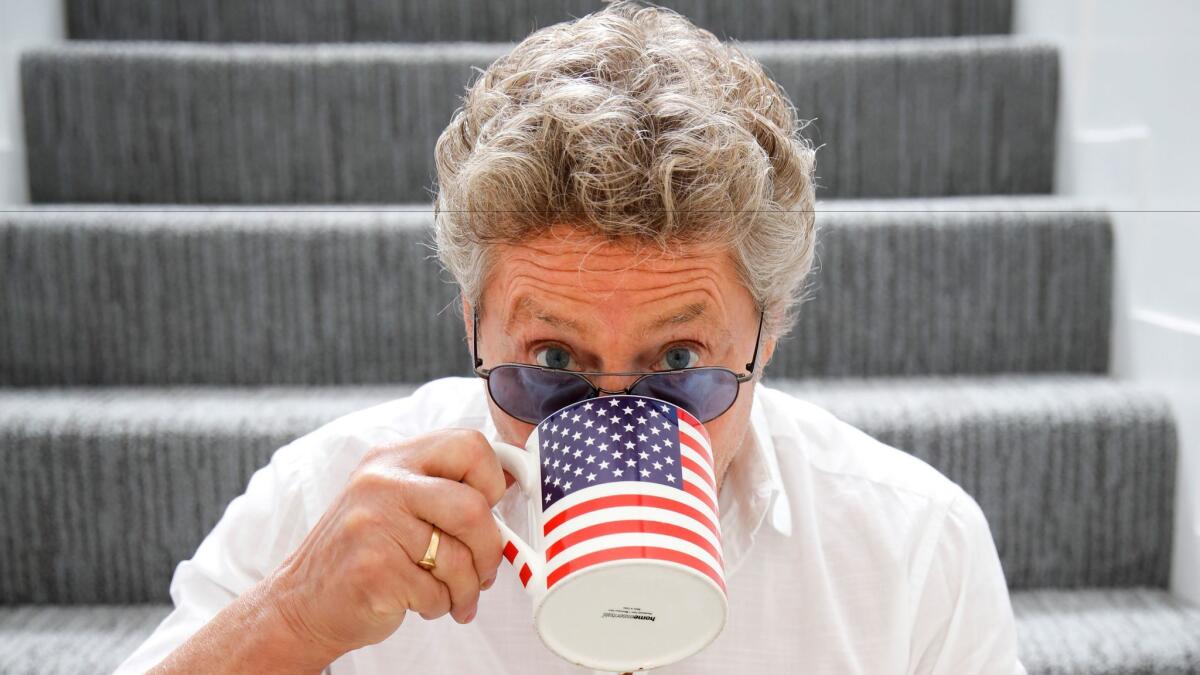Why Roger Daltrey is building âchill out zonesâ for teens with cancer

British rocker Roger Daltrey could have chosen any cause for his dollars and energy. But the founder and lead singer of the Who, alongside band-mate Pete Townshend, is championing the emotional well-being of teens diagnosed with cancer. Specifically: Setting up teen-centered units in hospitals, complete with flat-screen TVs, video games, a âchill out zone,â digital jukebox, pool tables and computer-equipped study lounges.
âItâs well-documented that the chance of survival for a psychologically contented and relatively happy patient is much better than for someone who is miserable and lonely,â Daltrey said. Through Daltreyâs work with Teen Cancer America â modeled after the U.K.âs Teenage Cancer Trust â there are now centers in six U.S. hospitals, including UCLA and one in development in Stanford. Another seven are projected to open later this year. A group of Teen Cancer America supporters, aiming to raise $45,000, will take part in the L.A. Marathon on March 19.
Why this cause?
I see the simplicity of it. In the medical system, there are either children or adults. And anyone who has had any dealings with kids will know that when they turn into teenagers, itâs a totally different kettle of fish. Teens with cancer were also going through the emotional trauma of being put with children, or even in the geriatric ward.
Whatâs the strategy?
Initially to get into some of the most prestigious hospitals in America. It took us two years to get a foot in the door at Memorial Sloan Kettering [Cancer Center in New York City] but we have a fabulous space in there now. Once the hospitals see the difference this makes in the treatment of this group, more are coming onboard. We want to be in every hospital in the country.
Why has it been a challenge getting it off the ground?
We thought it would be relatively easy over here. This is a benevolent, altruistic country. Weâve got 70 hospitals in the U.S. that want to work with us, but the fight to get funding is proving more difficult than we thought. Itâs easy to raise money for children. Much harder to raise it for teens.
What are the centers like?
They are very cool. Our architects work with the teenagers directly. Theyâve got the big screen TV with everything, but they also like the quiet spaces where they can keep their education up. And everything is always open, 24 hours a day. They can unload their problems with someone else who has been diagnosed, or going through treatments. They get the support of one another and itâs enormously helpful to recovery. You put these teens together, and it becomes a happier place to be.
Do you feel some sort of connection with that age group given that youâre in the music business?
Huge sections of the economy are aimed at this group. Our business is nothing without the support of teens. They are our foundation. They built the music business. We have to âfess up and say theyâre under-served. The more we look after this age group, the better our future will be.
READ ON!
Why midnight snacking is the worst
7 reasons why you canât lose the weight
Actress Sofia Vergaraâs secret? Lifting weights










